You’d find that ancient Mesopotamian jewelers mastered five primitive tools that created stunning jewelry around 2750 BCE. Stone and bone awls pierced precious gemstones like lapis lazuli with exceptional precision. Copper hammers shaped gold and silver more accurately than earlier stone tools. Fire pots with bellows generated intense heat for melting and casting metals. Grinding stones polished gemstones to brilliant finishes, while bronze needles enabled intricate granulation and filigree work. These revolutionary tools established the foundation for all subsequent jewelry-making techniques.
Stone and Bone Awls for Piercing Gemstones
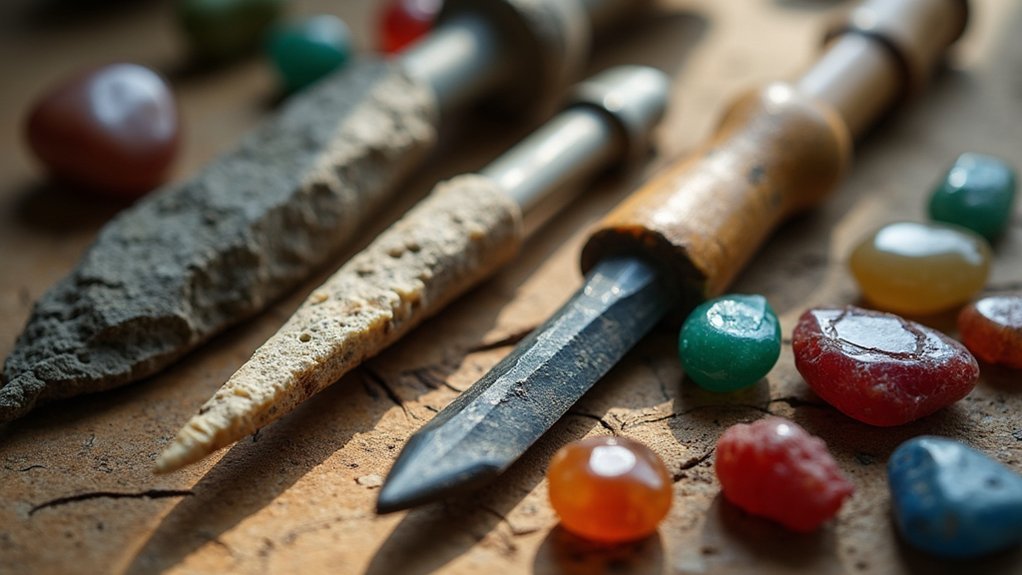
When ancient Mesopotamian jewelers needed to pierce gemstones for their elaborate designs, they relied on stone and bone awls as their primary tools.
You’ll find that Mesopotamian artisans crafted these essential instruments from durable materials like flint and animal bone, demonstrating remarkable resourcefulness in their tool-making techniques.
These awls enabled precise piercing of gemstones such as lapis lazuli and carnelian, allowing artisans to create intricate jewelry designs with exceptional accuracy.
The versatility of stone and bone awls extended beyond jewelry making to crafting various decorative items, showcasing the advanced craftsmanship of ancient Mesopotamian culture.
You’d appreciate how these tools enhanced both aesthetic appeal and cultural significance in finished pieces.
The meticulous skill required for piercing gemstones contributed directly to the overall quality of Mesopotamian jewelry.
Copper Hammers for Shaping Precious Metals
While stone and bone awls provided the precision needed for piercing gemstones, Mesopotamian artisans required different tools to shape the metal settings and frameworks of their jewelry.
You’d find Sumerian jewelers around 2750 BCE wielding copper hammers to transform gold and silver into stunning pieces. These copper hammers revolutionized jewelry making during the Bronze Age, offering far greater precision than earlier stone tools.
Copper hammers transformed ancient metalworking, giving Sumerian artisans unprecedented precision to craft intricate gold and silver jewelry by 2750 BCE.
You’d see craftsmen using various hammer sizes to achieve different effects, from delicate details to broader shapes.
Combined with advanced techniques like granulation and filigree, these tools enabled the creation of intricate designs with remarkable craftsmanship. The hammers allowed artisans to manipulate precious metals at varying temperatures, ensuring ideal durability and finish in their elaborate creations.
Fire Pots and Bellows for Heating and Melting Gold
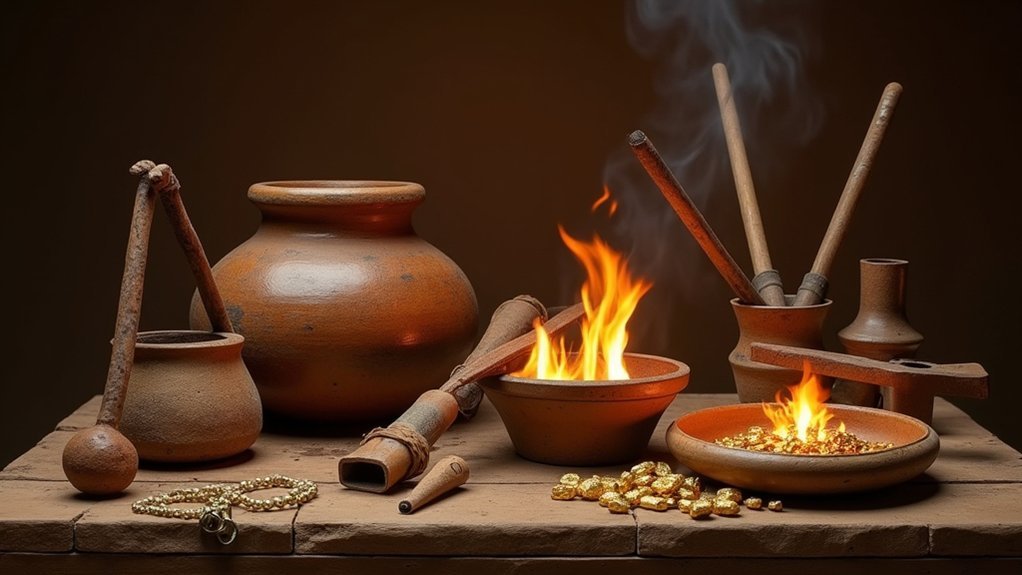
Beyond the precision of copper hammers, Mesopotamian jewelers needed intense heat to transform raw gold into workable material. You’d find fire pots as essential tools in ancient Mesopotamia, generating the high temperatures necessary for heating and melting precious metals.
When combined with bellows to increase airflow, these tools enhanced combustion and achieved the intense heat required for advanced jewelry making techniques.
Sumerian jewelers around 2750 BCE mastered this technology, enabling sophisticated craftsmanship through:
- Casting – Creating intricate gold forms and shapes
- Soldering – Joining metal pieces seamlessly together
- Gemstone setting – Securing precious stones into ornate designs
- Complex metalworking – Manipulating gold into detailed patterns
This mastery of fire pots and bellows didn’t just advance jewelry making—it fueled ancient Mesopotamia’s economic growth and expanded trade networks considerably.
Grinding Stones for Polishing Lapis Lazuli and Carnelian
After achieving the intense heat needed for metalworking, Mesopotamian jewelers turned their attention to perfecting gemstone surfaces using grinding stones made from harder materials than the precious stones themselves. You’d find Sumerian artisans skillfully polishing lapis lazuli and carnelian to achieve brilliant, smooth finishes that transformed raw stones into coveted jewelry making materials.
| Grinding Stone Type | Primary Gemstone | Finishing Result |
|---|---|---|
| Coarse Sandstone | Lapis Lazuli | Initial Shaping |
| Fine Quartzite | Carnelian | Surface Smoothing |
| Polished Granite | Both Stones | Mirror Finish |
| Shaped Flint | Detail Work | Intricate Designs |
| River Pebbles | Final Polish | Ultimate Brilliance |
Through expert craftsmanship, these gemstones became powerful status symbols in Mesopotamian society. The polishing process enhanced natural colors, creating luxury goods that showcased technological advancement while reflecting the economic importance of beautiful jewelry among wealthy elites.
Bronze Needles for Granulation and Filigree Work
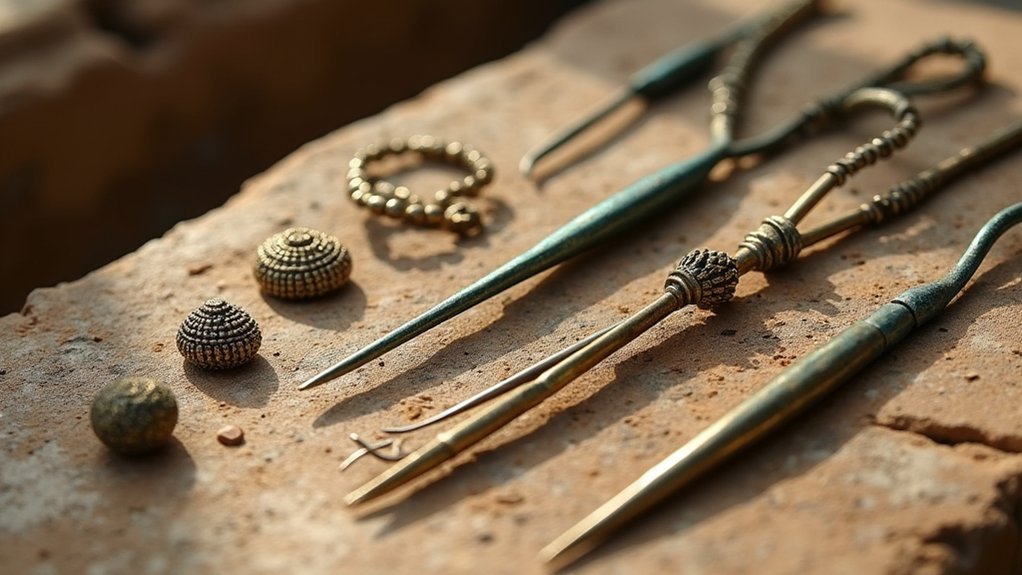
With gemstones perfectly polished and ready for setting, Mesopotamian artisans reached for their bronze needles to execute the most delicate aspects of jewelry creation.
These essential tools revolutionized jewelry-making around 2750 BCE, enabling intricate techniques that transformed ordinary metal into ornate pieces.
Bronze needles allowed ancient artisans to master two sophisticated methods:
Bronze needles revolutionized ancient jewelry-making by enabling artisans to perfect granulation and filigree techniques with unprecedented precision.
- Granulation – Meticulously adhering tiny metal granules to surfaces for textured designs
- Filigree – Manipulating delicate gold and silver threads into intricate patterns
- Detail work – Creating precise decorative elements that showcased exceptional skill
- Status symbolism – Producing elaborate jewelry that signified wealth in Sumerian society
You’ll find that these tools didn’t just enhance craftsmanship—they established trade networks as skilled jewelers became highly sought after for their expertise in Mesopotamian jewelry techniques.
Frequently Asked Questions
How Did Mesopotamians Make Jewelry?
You’d work gold, silver, and copper using granulation and filigree techniques. You’d craft beads, create chains with loop-in-loop methods, and set precious stones like lapis lazuli using specialized tools and decorative spiral motifs.
What Kind of Tools Did Mesopotamians Use?
You’d use hammers, chisels, and anvils for shaping metal, plus drills for creating holes in beads. You’d need tweezers for granulation work, delicate tools for filigree patterns, and polishing stones for finishing touches.
How Did They Make Jewelry in Ancient Times?
You’d use hammering, granulation, and filigree techniques to shape gold, silver, and copper. You’d craft chains with loop-in-loop methods, set precious stones like lapis lazuli, and create everything from simple earrings to elaborate headdresses.
What Materials Were Used in Mesopotamian Art?
You’d find Mesopotamian artists using gold, silver, copper, lapis lazuli, carnelian, and jasper in their creations. They’d import these precious materials through extensive trade networks, with lapis lazuli being especially valued for its rarity.
In Summary
You’ll find these ancient Mesopotamian tools surprisingly effective for creating stunning jewelry today. Whether you’re piercing gemstones with bone awls or shaping gold with copper hammers, you’re connecting with thousands of years of craftsmanship. Don’t underestimate the power of fire pots for melting metals or grinding stones for achieving that perfect polish. You can’t go wrong incorporating these time-tested techniques into your modern jewelry-making practice.

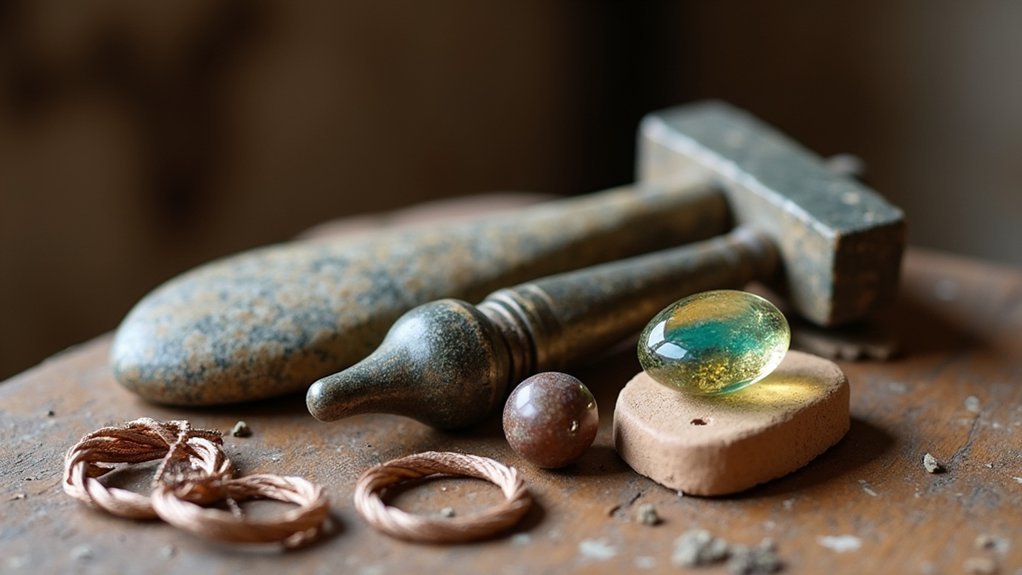
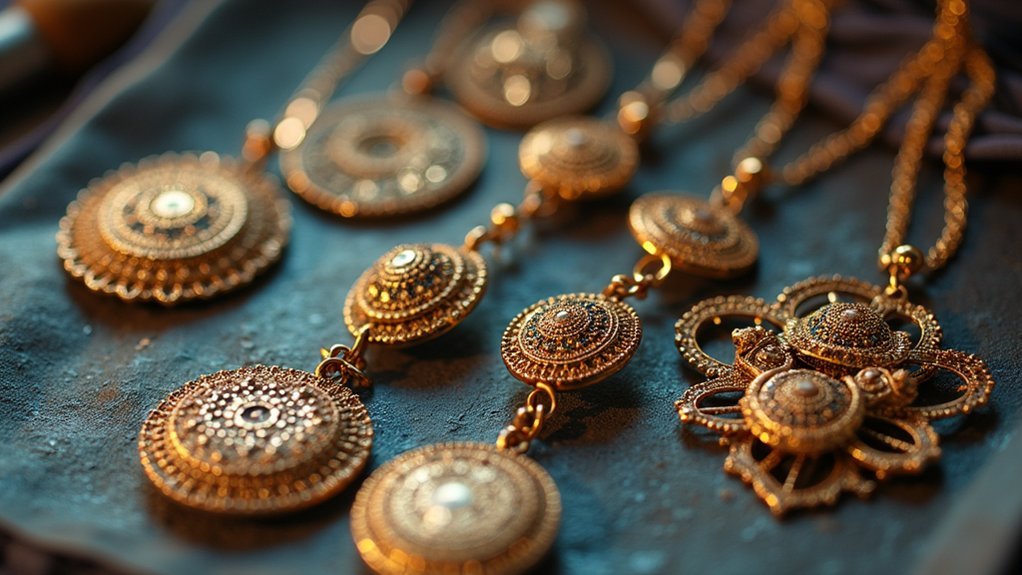
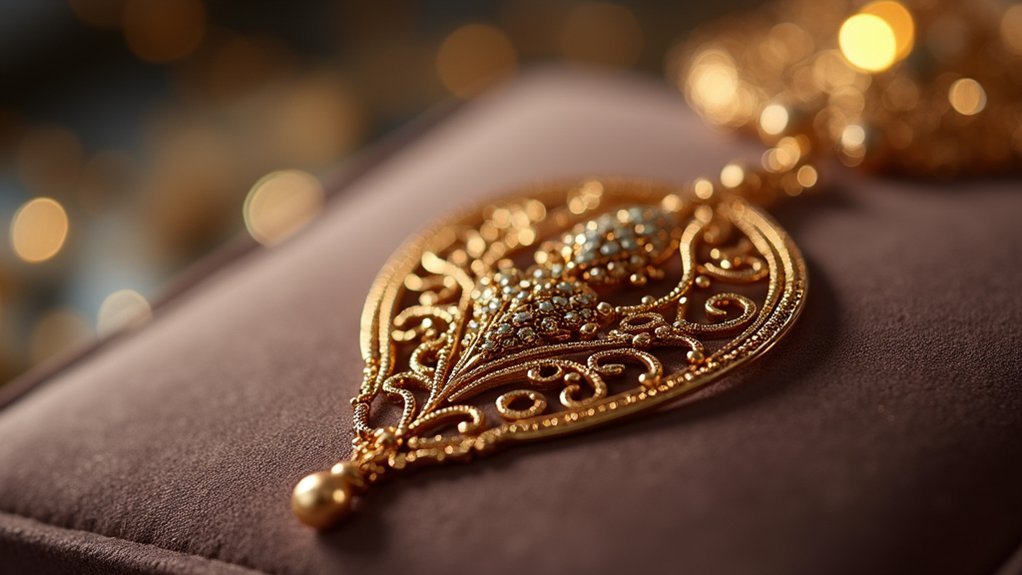

Leave a Reply